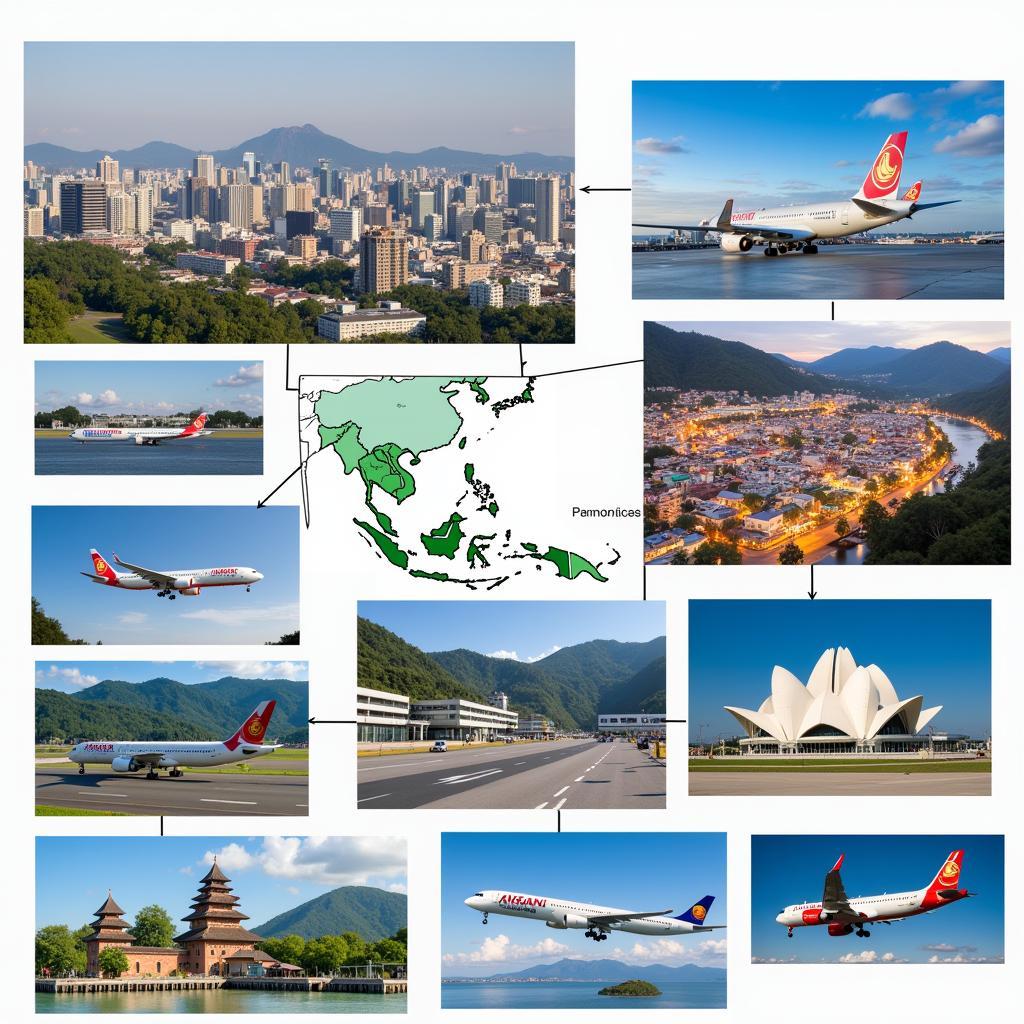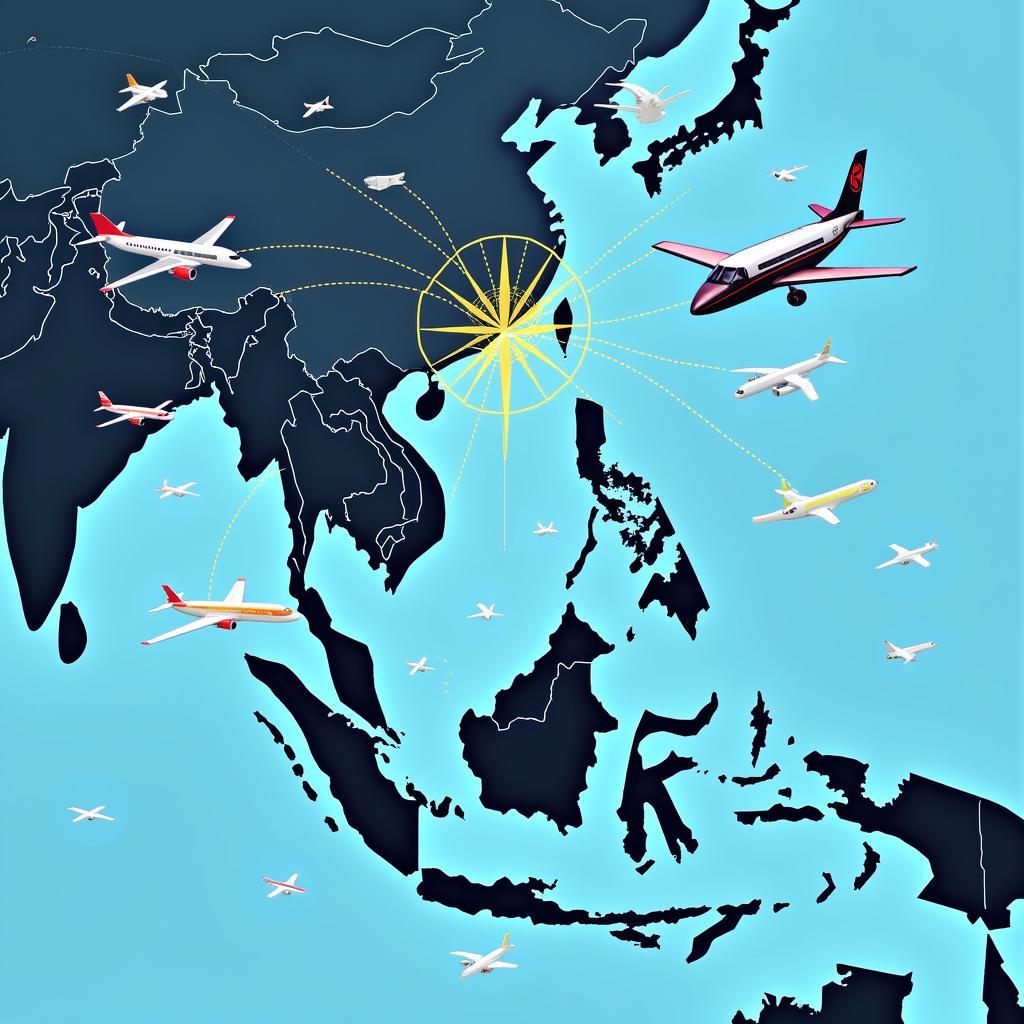Asean Air Transport is rapidly evolving, connecting people and businesses across Southeast Asia and beyond. This dynamic industry plays a crucial role in the region’s economic growth and integration, facilitating trade, tourism, and cultural exchange. From budget airlines to full-service carriers, the ASEAN sky is buzzing with activity. Let’s delve deeper into this fascinating sector and explore the trends shaping its future.
Understanding the Landscape of ASEAN Air Transport
The ASEAN region, with its diverse geography and burgeoning economies, presents unique opportunities and challenges for air transport. The rise of low-cost carriers has democratized air travel, making it accessible to a wider population. This has spurred tourism and fostered greater connectivity within the region. At the same time, the industry faces issues such as infrastructure limitations, regulatory complexities, and environmental concerns. Managing these effectively is crucial for sustainable growth.
The Impact of Low-Cost Carriers (LCCs)
LCCs have revolutionized ASEAN air transport. They offer affordable fares, stimulating demand and opening up new routes. This has been a game-changer, particularly for budget travelers and those exploring the region for leisure. The competition also pushes established airlines to innovate and improve their services.
 ASEAN Low-Cost Carrier Growth
ASEAN Low-Cost Carrier Growth
Addressing Infrastructure Challenges
While the demand for air travel continues to rise, infrastructure development needs to keep pace. Many airports in the region are facing capacity constraints, leading to delays and congestion. Investing in airport expansions and modernization is crucial for ensuring smooth and efficient operations.
Navigating Regulatory Frameworks
ASEAN member states are working towards harmonizing air transport regulations. This involves streamlining procedures, simplifying customs processes, and promoting greater cooperation between aviation authorities. The ASEAN Air Transport Agreement is a key initiative in this regard.
ASEAN Air Transport and Economic Growth
The contribution of air transport to ASEAN’s economic growth cannot be overstated. It fuels tourism, facilitates trade, and creates job opportunities. The seamless movement of people and goods is vital for regional integration and competitiveness on the global stage.
Boosting Tourism through Air Connectivity
Air travel has made it easier and more affordable for people to explore the diverse attractions of Southeast Asia. From ancient temples to pristine beaches, the region offers a rich tapestry of experiences. This has boosted tourism revenues and stimulated local economies.
 ASEAN Tourism and Air Connectivity
ASEAN Tourism and Air Connectivity
Facilitating Trade and Investment
Efficient air transport networks are essential for facilitating trade and investment. They enable businesses to quickly and reliably transport goods, access new markets, and participate in global supply chains. This contributes to economic diversification and growth. You can also see how the ASE display on airlift enhances visibility in the aviation industry.
The Future of ASEAN Air Transport
The ASEAN air transport sector is poised for continued growth. Technological advancements, such as ASE striping equipment and innovations in aircraft design, will further enhance efficiency and sustainability. Furthermore, increasing regional integration and cooperation will pave the way for a more seamless and connected airspace. Perhaps you’d be interested in learning more about ASE arrivals.
Conclusion
ASEAN air transport is a vital engine of growth and connectivity. By addressing the challenges and embracing the opportunities, the region can unlock its full potential and soar to new heights. ASEAN air transport continues to connect people, cultures, and economies, making it a dynamic and exciting industry to watch. Learn more about managing your travel with an ASE app subscription.
FAQ
- What is the ASEAN Air Transport Agreement?
- How have LCCs impacted air travel in Southeast Asia?
- What are the key infrastructure challenges facing ASEAN air transport?
- How does air transport contribute to ASEAN’s economic growth?
- What are the future trends in ASEAN air transport?
 Future of ASEAN Air Travel
Future of ASEAN Air Travel
Have any more questions? Need further assistance? Please contact us at Phone: 0369020373, Email: aseanmediadirectory@gmail.com or visit our office at Thon Ngoc Lien, Hiep Hoa, Bac Giang, Vietnam. We have a 24/7 customer support team.
